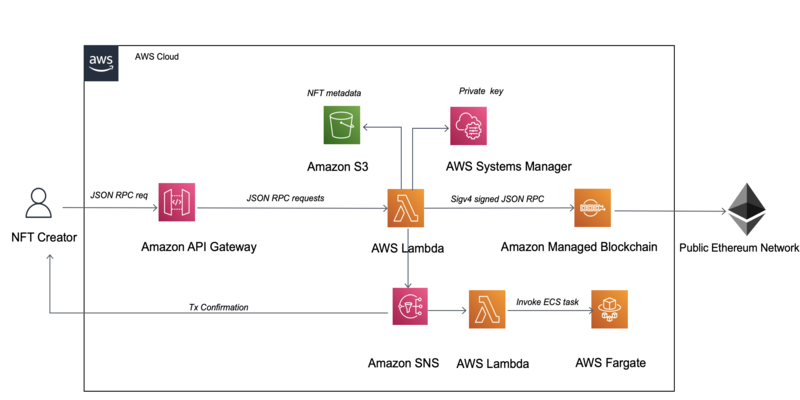AWS Database Blog
Category: Amazon Managed Blockchain
Notarize documents on the Ethereum Blockchain
Companies working in the public sector must often certify that their work complies with required standards and regulations. They must be auditable by external parties and accountable to the general public. Such companies often use a trusted third party that attests to certain attributes of documentation, such as its timestamp or authorship. Blockchains can automate […]
Automate Ethereum node validator deployment on Amazon EC2 using AWS CDK
Ethereum is a decentralized, open-source blockchain with smart contract functionality. The Beacon chain (ETH2) is an upgrade to Ethereum that introduced a proof-of-stake concept to the Ethereum ecosystem. Staking in ETH2 is done by validators who perform actions such as attestations and block proposal activities to improve the Ethereum network’s security and scalability. Validators in […]
Introducing Hyperledger Fabric 2.2 LTS Support on Amazon Managed Blockchain
As of January 5, 2022, Amazon Managed Blockchain supports the creation of new fully managed Hyperledger Fabric blockchain networks with the current long-term support (LTS) version 2.2. The milestone upgrade to Hyperledger Fabric 2.x brought a variety of useful features and improvements to Hyperledger Fabric, including refinements to features added in 1.4, and subsequent 2.1 […]
Develop a full stack serverless NFT application with Amazon Managed Blockchain – Part 2
This post builds upon the full-stack non-fungible token (NFT) development environment setup outlined in a previous post, which is considered a prerequisite to the topics we discuss in this post. Part 1 discussed how to set up a development environment; in this post we walk you through a complete NFT marketplace application using Amazon Managed […]
Store off-chain data using Amazon Managed Blockchain and Amazon S3: Part 1
Blockchain allows organizations to build applications where multiple parties can securely and transparently run transactions and share data without needing a trusted, central authority. Each member of the network has a copy of this transactional data. This is called on-chain data. Organizations often also want to store additional data along with the transactional data. For […]
How to sign Ethereum EIP-1559 transactions using AWS KMS
Ethereum is a popular public blockchain that enables you to create decentralized applications across a variety of use cases. In 2020 and 2021, it became widely used for decentralized finance (DeFi) apps and non-fungible token (NFT) apps. Due to its permissionless nature, it’s available to every user by just setting up an Ethereum account. These […]
Mint and deploy NFTs to the Ethereum blockchain using Amazon Managed Blockchain
The commercialization of Web 3.0 protocols has led to an explosion of applications in the areas of decentralized finance (DeFi) and digital asset tokenization on blockchains, both public and private. Non-fungible tokens (NFTs) are an increasingly popular way of providing proof of ownership and authenticity of digital assets. Many large enterprises, in particular those with […]
Develop a Full Stack Serverless NFT Application with Amazon Managed Blockchain – Part 1
The advent of blockchain technology, a decentralized ledger on which digital assets can be created and exchanged peer to peer, has shifted the conventional understanding of ownership. Often, these digital assets are referred to as tokens, which you can use as a medium of exchange like a currency, a representation of a physical or digital […]
Your guide to Amazon Managed Blockchain and Amazon QLDB breakouts, workshops, and chalk talks at AWS re:Invent 2021
AWS re:Invent 2021 is here! This post includes a complete list of Amazon Managed Blockchain and Amazon Quantum Ledger Database (Amazon QLDB) sessions taking place at re:Invent 2021. This year we have five total sessions on Managed Blockchain and Amazon QLDB, including one breakout, three chalk talks sessions, and one workshop. Make sure to sign […]
Use Key Management Service (AWS KMS) to securely manage Ethereum accounts: Part 2
Ethereum is a popular public blockchain that makes it possible to create unstoppable applications in a permissionless fashion. It’s available to every user that has an Ethereum account. These Ethereum accounts consist of a private and an associated public key. The main challenge as a user participating in a public blockchain such as Ethereum is […]









